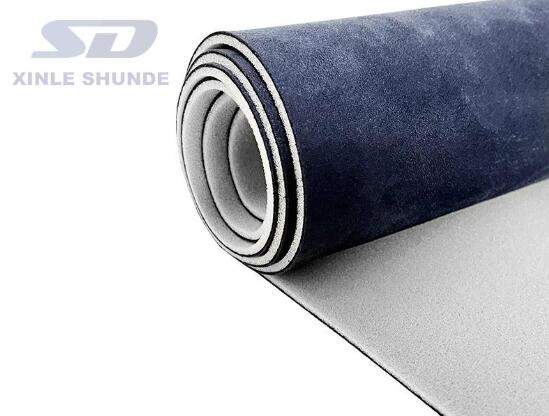In recent years, the demand for non-toxic, eco-friendly materials in the automotive industry has increased significantly. As consumers become more conscious of their environmental impact and health, automakers and suppliers are actively seeking materials that are safe, sustainable, and high-quality. One essential component in vehicle interiors is the headliner fabric, which covers the ceiling and is a significant part of the overall interior aesthetics and comfort. Choosing non-toxic automotive headliner fabric is not only beneficial for passengers but also aligns with industry trends in sustainability and safety.

Non-toxic automotive headliner fabric contributes to a healthier interior environment by reducing harmful emissions, commonly known as volatile organic compounds (VOCs). Traditional materials often contain chemicals that can off-gas over time, potentially leading to respiratory problems, allergies, and other health concerns, especially in enclosed spaces like car interiors. By selecting non-toxic fabrics, automakers reduce VOC emissions, making the air inside vehicles safer for passengers, especially those with allergies or sensitivities to chemicals.
In addition to protecting passengers, non-toxic fabrics also meet stricter safety regulations and environmental standards, which are increasingly required by governments and regulatory bodies. This commitment to safety and compliance improves the overall value and market appeal of the vehicle.
Non-toxic headliner fabrics are not only safe but also durable and comfortable. These fabrics are often crafted with advanced materials that offer resistance to stains, fading, and abrasion, ensuring that the headliner remains in good condition over time. This durability is especially valuable in high-use environments, where regular wear and tear can degrade interior materials.
Comfort is another key benefit. Non-toxic headliner fabrics are often made from breathable materials, which help regulate temperature and moisture, contributing to a more pleasant and comfortable ride. This can be particularly beneficial in regions with extreme climates, where interior temperatures can fluctuate.
The production of non-toxic automotive headliner fabrics often involves environmentally friendly processes that reduce waste and minimize the use of harmful chemicals. Manufacturers increasingly rely on sustainable practices, such as recycling and using renewable resources, to create these fabrics. By choosing non-toxic materials, automakers support eco-friendly production methods, which can help reduce the carbon footprint of vehicle manufacturing.
This focus on sustainable practices also reflects a broader industry trend toward more environmentally responsible production, meeting the expectations of environmentally conscious consumers. As the automotive industry seeks to reduce its environmental impact, non-toxic headliner fabrics offer a tangible way to achieve that goal.
In addition to their functional benefits, non-toxic headliner fabrics are available in a variety of colors, textures, and finishes, making them an attractive choice for vehicle customization. With these materials, automakers can offer a stylish interior that reflects current trends and personal preferences without compromising safety or sustainability. Consumers can enjoy an aesthetically pleasing interior that aligns with their lifestyle and values.
The versatility of non-toxic headliner fabrics means they are suitable for various vehicle types, from luxury cars to family SUVs, providing options for all kinds of automotive designs. This flexibility allows designers to create unique and visually appealing interiors while adhering to non-toxic material standards.
The shift toward non-toxic automotive headliner fabrics represents a significant step forward in creating safer, more comfortable, and environmentally responsible vehicle interiors. These materials not only enhance air quality and passenger safety but also offer durability, comfort, and a range of design options. As a responsible supplier of automotive materials, we strive to provide high-quality, non-toxic headliner fabrics that align with industry standards and customer needs. For more information or to explore our product range, please contact us directly.